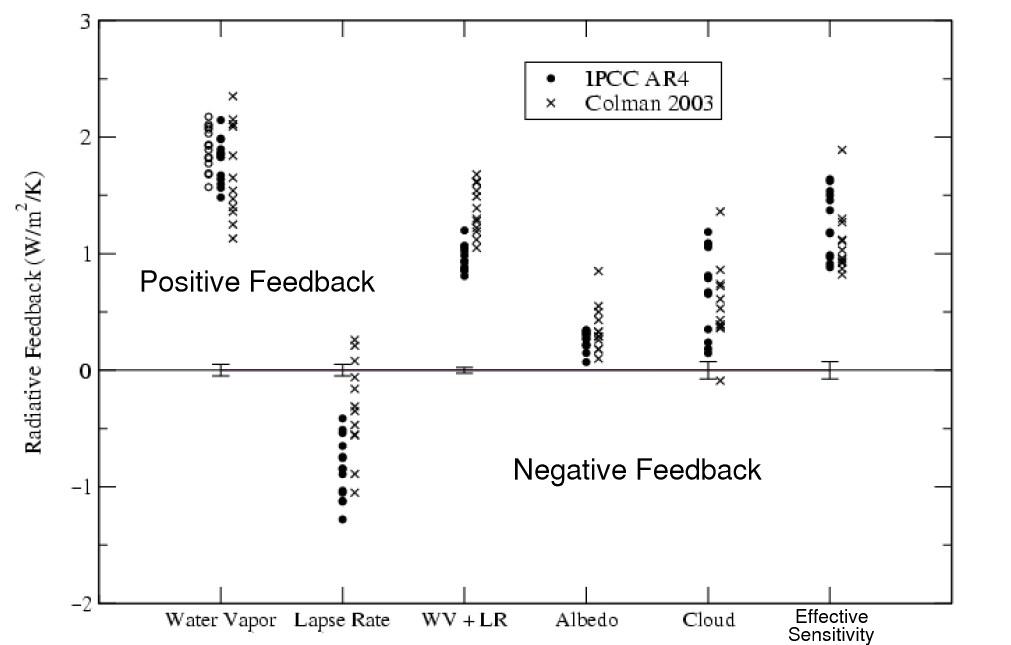Radiative forcing for CO2 is dF = 5.35 ln (C/ci) and with the increase in radiative forcing you have to get a higher temperature to get a balance- you have ~3.8 W/m^2 from the 2x CO2 and dT/ dF = (0.5 K)(6.1) from the temperature adjustment from one state to another: the 1.2 C increase is pretty much undisputed but you get additional feedbacks from water vapor, and you get a bit more broad climate sensitivities here, but an enormous amount of studies and paleoclimatic consistency suggests ~ 3 C as an average value, low-end now around 2 C.
See ex.
http://www.gfdl.noaa.gov/reference/bibliography/2006/bjs0601.pdfand go over some of the material here-

Most uncertainty is still in cloud parameterization and of course socio-economic projections (ie will we play business-as-usual or reduce emissions?), but for an overview of "all feedbacks"
Temperature (Planck) feedback: The major negative feedback on climate change (as Earth warms it radiates more according to Planck's law), and completely understood.
Water vapor feedback: Strongly positive, but still some uncertainty in its magnitude due primarily to the upper troposphere contribution
Lapse rate feedback: A major negative feedback that offsets part of the water vapor feedback; well understood conceptually (lapse rate change follows the moist adiabatic lapse rate approximately, so for a given warming at the emission to space altitude there's less warming at the surface) but magnitude depends on other feedbacks
Sea ice feedback: Positive, but magnitude is uncertain
Cloud feedback(s): There are many cloud feedbacks, on amount, height, optical thickness, etc., and different for different cloud types and at different latitudes. Overall, today's models produce cloud feedbacks ranging from approximately neutral to strongly positive. There could be an overall negative cloud feedback but it couldn't be very strong, because we have data that show that overall low clouds, which control the albedo more than any other kind, get thinner when it gets warmer.
I've not gone over the U.S Climate Change Report (2006) in a few months, but that and the IPCC (2007) report clearly show the temperature trends in the atmosphere are in line with the greenhouse forcing and not explainable by natural variability. It most certainly is not a "key component" for AGW to work, but since the troposphere is warmed from below and not from above I don't think it is a problem- and I've not seen any data to suggest otherwise.
If you want more technical analyses of the radiative physics, this is a good book http://geosci.uchicago.edu/~rtp1/ClimateBook/ClimateVol1.pdf (ch. 3 and 4 should answer some questions)and for specifically on the absorption bands of CO2 as a function of concentration, a guest post at RC from Dr. Pierrehumbert (the author) and Spencer Weart
http://www.realclimate.org/index.php/archives/2007/06/a-saturated-gassy-argument-part-ii



